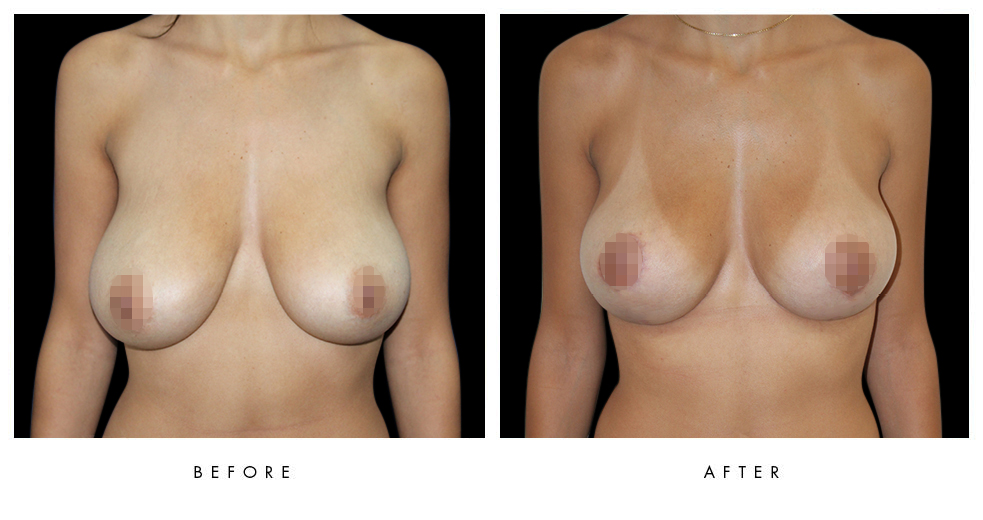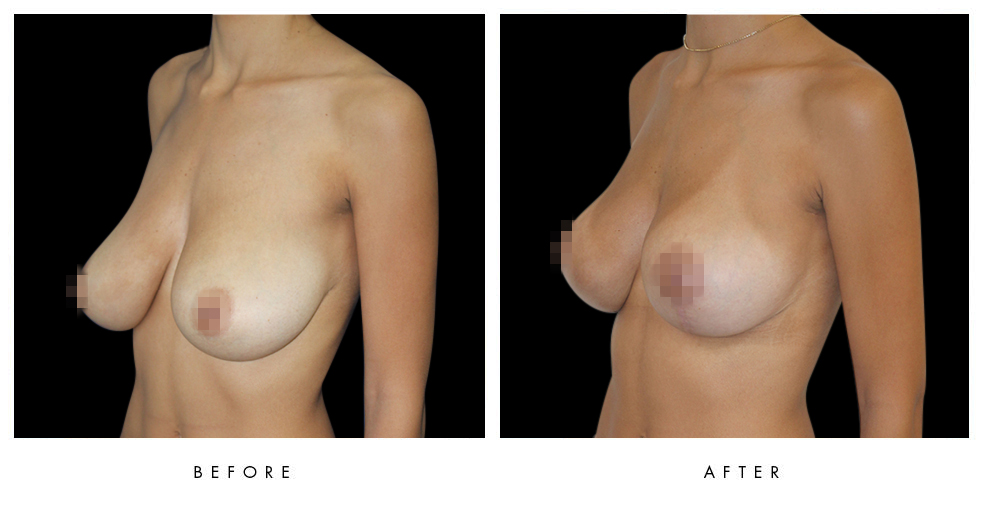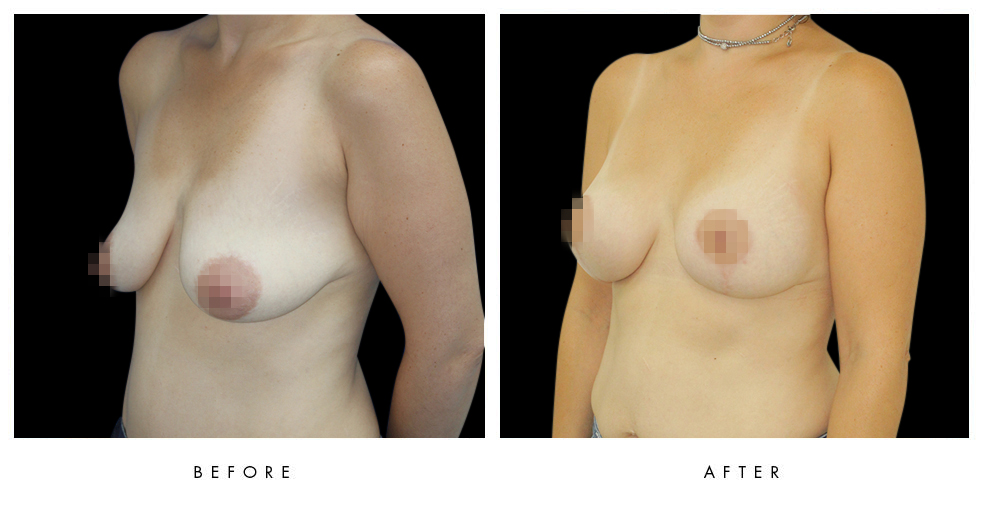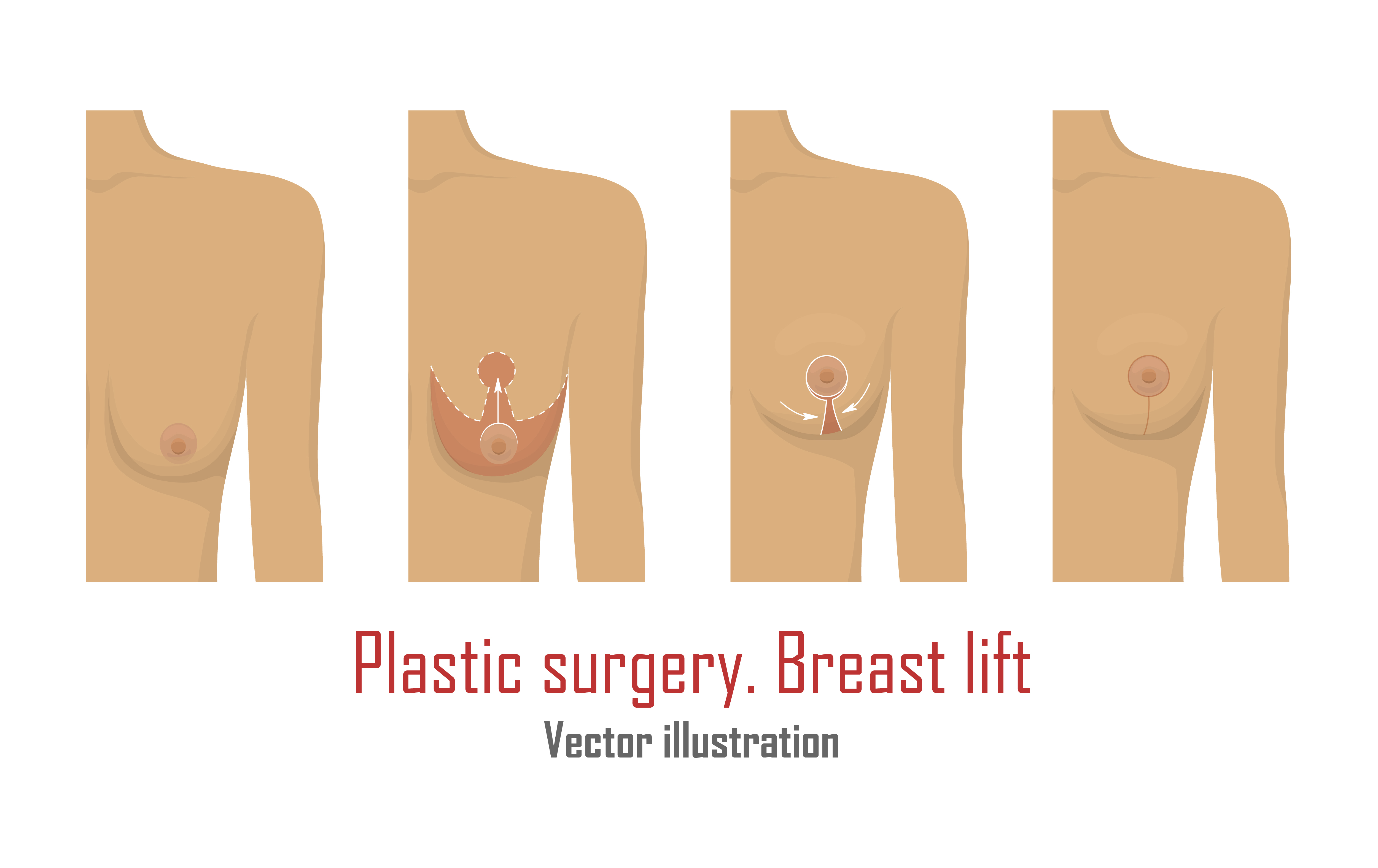BREAST SURGERY /
Breast Lift
Table of Contents
What is a breast lift (mastopexy)?
Mastopexy, also known as a breast lift, is a surgical procedure in which excess skin is removed from the breast area and the remaining breast tissue is sculpted to make it more proportionate and elevated. Typically, the areola can grow over the years and in a breast lift, it is made smaller.
Advantages of a Breast Lift
The shape, texture and structure of the breasts can change with time. A breast lift procedure can make the breasts appear younger and more proportionate to your body structure. The structure of the breast tissue is affected by pregnancy, nursing, weight gain/loss and genetics.
*A breast lift alone will not significantly change the breast size. A breast augmentation procedure can be used to increase breast volume and can be performed along with a breast lift in the same procedure. Reduction of breast size and lifting of the breasts can be performed using a breast reduction.
What makes someone a good candidate for a breast lift?
- If you feel that your breasts are sagging or empty and this makes you feel uncomfortable or affects your self-confidence.
- If without a bra, your nipples are below your breast fold.
- If your nipples point downwards and your areola is large.
- If one breast is lower than the other.
- If your weight is stable.
Breast Lift Consultation
During the consult we will get to know one another and we will discuss:
- The reasons you are interested in getting a breast lift, what expectations you have, what results you are looking to achieve and what can be done realistically to improve your appearance. (By coordinating expectations, we can increase your satisfaction and alleviate any worries you may have regarding the procedure.)
- Any family history you have of breast cancer.
- Your health status and medical history, including any drug sensitivities you might have or what medication, if any, you take regularly and whether or not you smoke.
We will also perform a full breast examination and measurement of your breasts. In the event that you decide to undergo breast augmentation along with the breast lift, we will measure implants of various sizes in front of the mirror in order to adjust the implants to your size and expectations.
After measuring the implants and understanding your expectations, we will examine the various options and decide which is the best option for you:
- Breast lift with implants
- Autologous fat injections
- A combination of the two
You will receive a complete explanation regarding the procedure, where the scars will be and the recovery process. It is natural to feel anxious or excited prior to our consultation. Understanding the process will help reduce anxiety. You are welcome to ask any questions you may have and discuss any anxiety you may have during the consultation.
How to prepare for the procedure:
- Have blood tests done.
- In some cases, you may be asked to have a breast ultrasound or mammogram.
- In the event that you take medication on a regular basis, we will determine if the treatment should be adjusted for the procedure.
- Avoid taking aspirin, anti-inflammatory medications such as ibuprofen, as well as vitamin E and omega 3 for the two weeks prior to the procedure as they may increase the risk of bleeding.
- Stop smoking cigarettes for the month prior to the procedure and the month after the procedure.
- Ensure that you have a companion (friend/family member) who can pick you up from the hospital and stay with you for at least the first night after the operation.
Steps of breast lift
Step 1: Anesthesia
The procedure involves general anaesthesia.
Step 2: Incision
There are three types of incisions:
- Around the areola
- The “lollipop” incision: an incision is made around the areola and a vertical incision is made downwards towards the inframammary fold.
- The “anchor” incision: An incision is made around the areola with a vertical incision towards an additional incision along the inframammary fold.
The location of the scar is decided upon according to the extent to which the breasts sag and will be explained during your consultation.
Step 3: Shaping the Breast
After the incisions are made:
- The breast tissue will be shaped and lifted.
- The nipple will be lifted to the proper location and the areola will be reduced in size if necessary.
- Excess skin will be removed.
Step 4: Suturing the incisions
- The incision will be closed in layers with dissolvable stitches only.
- There is no need to have the stitches removed.
- The incisions will be covered with dressings.
- The scars will fade over the next 6-12 months.
Step 5: The Results
The results are immediate however it can take a number of months to see the final outcome, once all the swelling in the area has subsided.
In the event that you wish to have a breast augmentation using implants or fat injections, the procedure will be performed during the same operation.
What can I expect during the recovery process?
- A dressing or surgical tape will be placed over the incisions at the end of the procedure.
- After the procedure, you will be transferred to recovery. From there you can return home after a few hours when you are stable enough to leave (if you feel well and you are able to return home).
- If you wish, you can remain in the hospital for a night after the procedure and we will make arrangements prior to your surgery.
- Before you leave, you will receive post-operative instructions from the doctor.
- You will need to wear a supportive bra after the procedure for 6 weeks in order to minimize swelling as much as possible during the recovery process.
- Avoid all athletic activity with the exception of walking for the first six weeks.
- You may take pain relievers as directed following the procedure. Most patients take pain relievers for the first 2-6 days following the procedure.
- Be sure to update your physician regarding any changes in your health status.
- We will schedule follow-up visits in order to monitor your recovery 1, 3, 6 and 12 months after the operation.










